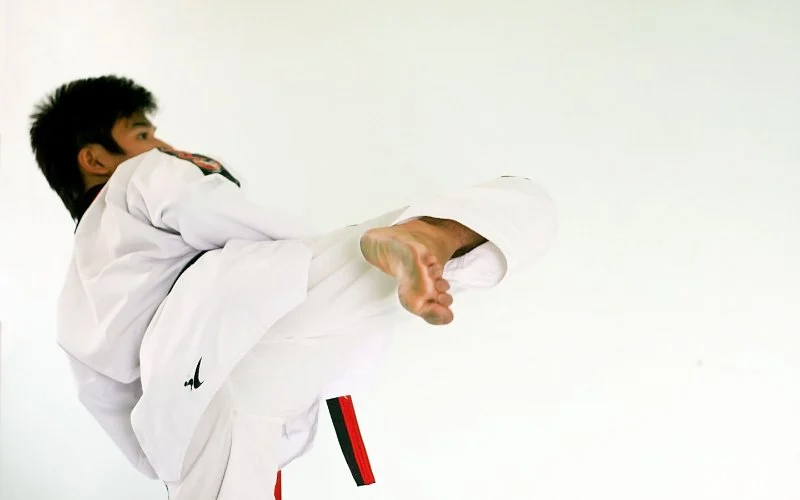
- Understanding the Science of Tae Kwon Do Kicks
- Biomechanics of a Tae Kwon Do Kick
- Physics of a Tae Kwon Do Kick
- Real-Life Examples of Tae Kwon Do Kicks in Action
- Why Choose Jeuns TKD Hub for Tae Kwon Do Training
Understanding the Science of Tae Kwon Do Kicks
Tae Kwon Do kicks are not only impressive in their athleticism but are deeply rooted in both biomechanics and physics. Understanding the science behind these kicks can help practitioners improve their technique and achieve greater precision, power, and control. Whether you're a beginner or an advanced student, grasping the mechanics of your kicks can elevate your martial arts performance.
The kicks in Tae Kwon Do require complex coordination between different parts of the body, such as the legs, core, and arms. At the same time, they involve the application of basic principles of physics—force, speed, and leverage—to produce an effective strike. By exploring the biomechanics and physics of Tae Kwon Do kicks, we can gain a deeper understanding of why certain techniques are more effective than others.

Paul Prendergast Karate / paul prendergast
Brick TownshipOcean CountyNew Jersey
950 Cedar Bridge Ave, Brick Township, NJ 08723, USA
Biomechanics of a Tae Kwon Do Kick
The biomechanics of a Tae Kwon Do kick focuses on how the body’s muscles and joints work together to generate power and control. A Tae Kwon Do kick involves several key components:
1. Muscle Activation: Kicking in Tae Kwon Do requires the engagement of multiple muscle groups. The primary muscles involved include the hip flexors, quadriceps, hamstrings, and glutes. When executing a high kick, such as a spinning or jumping kick, the core muscles, including the abdominals and obliques, are also heavily engaged to provide stability and balance.
2. Joint Movements: The movement of the leg during a Tae Kwon Do kick involves several joint actions, including flexion and extension at the hip, knee, and ankle joints. A proper kick involves smooth coordination between these joints, allowing the practitioner to generate speed and power. The flexibility of the hip joint, in particular, plays a crucial role in executing high kicks such as the head kick or the roundhouse kick.
3. Leverage and Body Positioning: The angle and position of your body significantly affect the effectiveness of your kick. The more efficient the alignment of your body, the more force can be transferred through your kicking leg. For example, a proper pivot of the supporting foot and hip rotation allows the practitioner to maximize the power generated from their body into the target.

CKO Kickboxing Sheepshead Bay / cko kickboxing sheepshead bay brooklyn ny
2615 E 17th St, Brooklyn, NY 11235, USA
Physics of a Tae Kwon Do Kick
When it comes to Tae Kwon Do kicks, understanding the physics behind them is crucial for achieving maximum impact. Several fundamental physics principles come into play when executing a powerful kick:
1. Force and Acceleration: According to Newton's second law of motion (F = ma), force is the product of mass and acceleration. In a Tae Kwon Do kick, the speed (acceleration) of the leg plays a significant role in determining the force of the kick. The faster you can accelerate your kicking leg, the greater the force you will generate upon contact. This explains why speed is just as important as strength in delivering powerful kicks.
2. Kinetic Energy: Kinetic energy is the energy of motion, and it is directly related to the speed and mass of the object in motion. When executing a Tae Kwon Do kick, the more kinetic energy you can generate, the more powerful the strike will be. The key to generating kinetic energy is accelerating the kicking leg as quickly as possible. The force of the kick depends on how much kinetic energy is transferred to the target upon impact.
3. Angle of Impact: The angle at which the kick strikes the target plays a critical role in how effective the kick will be. A well-placed kick, especially in kicks like the roundhouse or side kick, uses an optimal angle to maximize force and ensure that the target receives the maximum amount of energy. The right angle can also prevent your leg from absorbing too much impact, reducing the risk of injury.
Real-Life Examples of Tae Kwon Do Kicks in Action
Understanding the biomechanics and physics behind Tae Kwon Do kicks can be exemplified through real-life scenarios. One famous example is the roundhouse kick used in sparring or self-defense situations. In competitive Tae Kwon Do, a well-executed roundhouse kick can generate significant power and speed, which often leads to scoring a point in sparring matches. This kick requires precise body positioning, efficient hip rotation, and controlled acceleration to deliver maximum force to the opponent.
Another example is the jumping spin kick, often seen in demonstrations or high-level competitions. This kick combines both biomechanical and physical principles—force, balance, and angle—while also utilizing the principle of leverage to elevate the leg to a high target, often the head or torso of the opponent. By understanding how the body moves and how energy is transferred, a martial artist can perfect this difficult kick and improve their overall performance in competition.
Why Choose Jeuns TKD Hub for Your Martial Arts Needs
If you’re looking to improve your Tae Kwon Do techniques and understanding of biomechanics and physics, Jeuns TKD Hub is the place to start. We offer a comprehensive range of training programs designed to help you perfect your kicks and overall martial arts performance. Whether you’re a beginner or an experienced practitioner, our expert instructors provide personalized training to enhance your technique and understanding of Tae Kwon Do science.
At Jeuns TKD Hub, we offer a variety of resources, from expert coaching to detailed training guides, to help you master the biomechanics and physics behind your kicks. Visit us today to take your Tae Kwon Do skills to the next level!


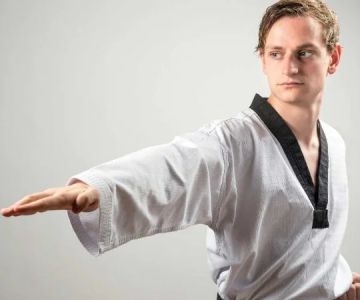

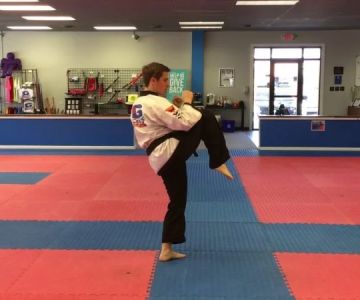
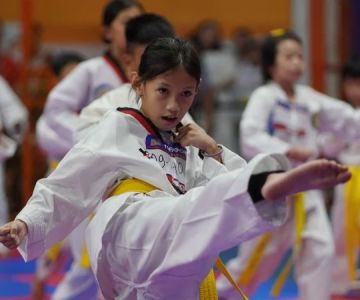
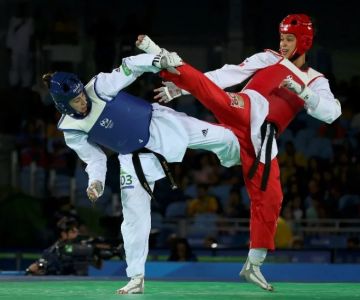
 Axtion Club4.0 (74 reviews)
Axtion Club4.0 (74 reviews)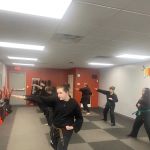 Montella's Karate Academy5.0 (21 reviews)
Montella's Karate Academy5.0 (21 reviews) Master Moreland Tae Kwondo4.0 (17 reviews)
Master Moreland Tae Kwondo4.0 (17 reviews) Freestyle Martial Arts Academy5.0 (52 reviews)
Freestyle Martial Arts Academy5.0 (52 reviews) Kimling's Academy of Martial Arts4.0 (73 reviews)
Kimling's Academy of Martial Arts4.0 (73 reviews) US OLYMPIC TAE KWON DO INSTITUTE5.0 (19 reviews)
US OLYMPIC TAE KWON DO INSTITUTE5.0 (19 reviews)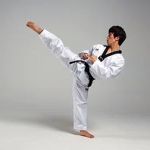 How to Execute a Jumping Roundhouse Kick to the Head
How to Execute a Jumping Roundhouse Kick to the Head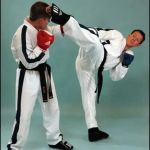 How to Execute a Double Kick Combination in Sparring
How to Execute a Double Kick Combination in Sparring How to Perform a Flawless Axe Kick: A Step-by-Step Guide
How to Perform a Flawless Axe Kick: A Step-by-Step Guide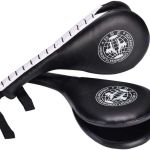 DIY Tae Kwon Do Training Equipment for Home Practice
DIY Tae Kwon Do Training Equipment for Home Practice How to Increase Your Vertical Jump for Tae Kwon Do Flying Kicks
How to Increase Your Vertical Jump for Tae Kwon Do Flying Kicks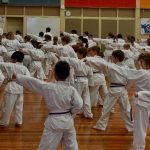 The History of the Tae Kwon Do Peace Corps
The History of the Tae Kwon Do Peace Corps